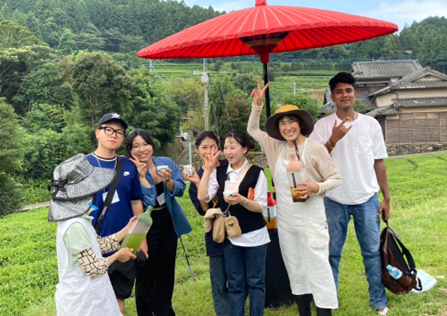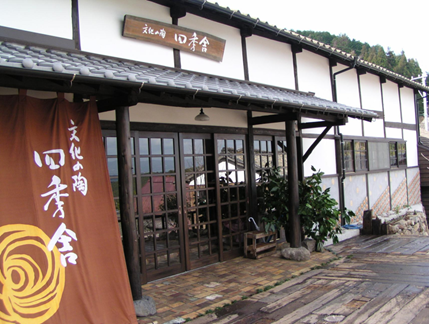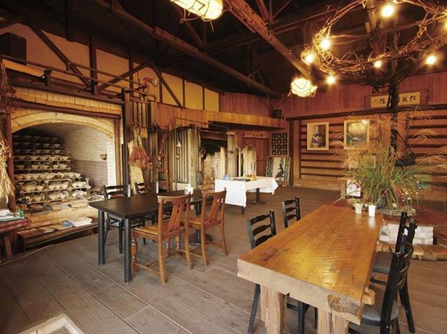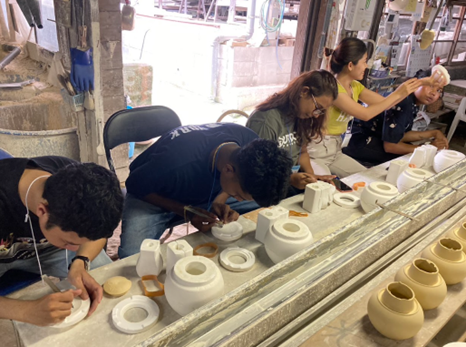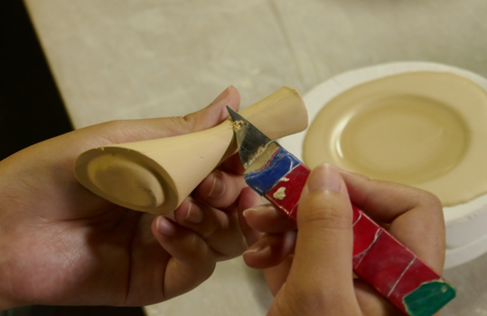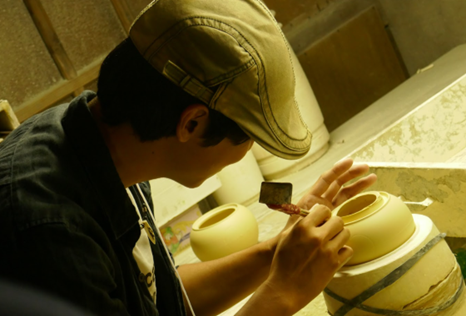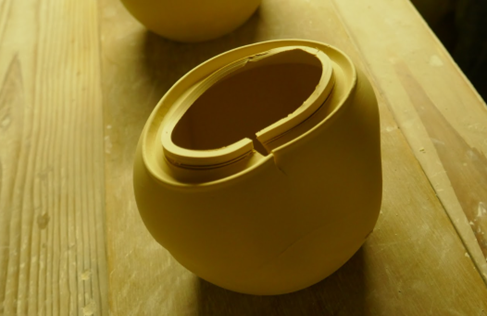This site is available in multiple languages. Please select your preferred language from the bar at the bottom right.
Craft Kyushu | A report from an international student living in Kyushu about the real experiences and excitement of traditional crafts

Ng Kwun Chun
Hasami Town Ceramic Art Farm Experience Event
August 21, 2023 Hasami Town Ceramic Rural Experience Event
Hasami Town is a small town in Nagasaki Prefecture, famous for its unique Hasami ware. While nearby Arita ware is characterized by its colorful painting, Hasami ware is characterized by its simple and delicate patterns such as blue painting on white porcelain. It is also more affordable than Arita ware, making it a perfect souvenir.
West Plains

Nishinohara, adjacent to Hasami Ceramic Art Park, is lined with cafes, restaurants, general stores, and other shops. The terrain here is sloping and perfect for pottery. There used to be a kiln called "Fukumitsu Pottery" that has been in operation since the Edo period. Fukumitsu Pottery produced Hasami ware for 10 generations until it closed in 2001.

On the first morning, we participated in a soba noodle making experience. All you need to make soba is some basic tools, and the ingredients are very simple.

First, Kobayashi-san explained to us how to make soba noodles: don't add too much water at first, use your hands like claws to mix the buckwheat flour, then add water little by little.

Simply knead the buckwheat flour into a ball and you're ready to move on to the next step.
Finally, put the cut soba noodles into boiling water and boil. When the noodles float to the top, boil for another minute and remove them. Rinse off the excess buckwheat flour with clean water and you're done!
After lunch, we went to visit the Takayama Pottery Factory.
The factory was built relatively recently and is a brand new, modern facility where a wide range of Hasami ware is produced.
Afterwards, we visited the old Takayama Pottery Factory. There was no air conditioning in the factory, and it was unimaginably hot when the pottery was being fired. We couldn't help but admire the craftsmanship of the workers. However, with the completion of the new factory, the old factory has completed its historical mission, and it is scheduled to be demolished and converted into a new factory, tourist facility, etc.
The last part of the tour is a pottery painting experience. First, the teacher will demonstrate the important points to note when painting and how to use a brush, and then you will paint your own original pottery.

First, draw the pattern you like with a pencil, and then paint with a brush. When coloring, you need to be careful not to color the same place multiple times, otherwise there will be height differences on the surface of the pottery. Therefore, you need to be very careful when coloring.

Once your painting is complete, you can hand it over to the staff to be fired. However, because it takes time to fire your work, you cannot take it home on the day. If you want to participate in Handmade Friends, please give it a try!

August 22, 2023 Hasami Town Ceramic Rural Experience Event
This morning, I went to the "Oniki Rice Terraces" in Hasami Town. The Onuki Rice Terraces are one of the best-preserved rice terraces in Japan and are considered an important cultural and natural heritage site. They have also been selected as one of the "100 Best Rice Terraces in Japan" and are one of the important cultural landscapes of the country. I started at the Hasami Town Agricultural Museum.
We walk to the Onitsuka Rice Terrace Observation Deck while admiring the Onitsuka Rice Terraces.
This is the observation deck at Oniki Terraced Fields.

Afterwards, we walked to a nearby rest area where we were warmly welcomed by the locals. It was very relaxing to enjoy some delicious Japanese sweets while feeling the cool breeze.
For lunch, we went to the Culture Tower Shikisha, a community center that was renovated from a former ceramics factory. Both the exterior and interior are filled with the unique atmosphere of a ceramics production area.
After the meal, the director of the Hasami Town Cultural Exchange Center guided us to a stream where pottery from the Edo period has been excavated. This activity is somewhat dangerous and should be carried out under the escort of an expert.
Finally, with the guidance of an apprentice, you will use the pottery shards you found to create your own unique decorative item.
We highly recommend bringing together friends who love nature to join today's event, as the refreshing scenery will help busy city folk relax.
August 23, 2023 Hasami Town Ceramic Rural Experience Event
In the morning, we went to a pottery factory in Nakaoyama and experienced the production of ceramics using the unusual injection molding method. As the name suggests, injection molding is a type of pottery in which mud is poured into a plaster mold to create the finished product. First, the pottery teacher explained the manufacturing method of injection molding pottery.

Next, I will introduce the tools I used in the production. The pottery this time is a teapot, so it comes with a handle, a spout, a lid, and a plaster mold of the body.

First, choose the pattern you like for the lid. Since the plaster model cannot be modified, you need to choose the pattern carefully. Once it is complete, pour in the mud. Do the same for the other parts.
Then you wait for the clay to take shape and use a tool to cut away the excess.
Clay is very fragile and needs to be repaired with care, or it will get damaged.
The various parts of the teapot are then connected and finally handed over to staff for firing.

We also played a game where we had to put fuel into a furnace to fire pottery. It looks easy, but it's surprisingly difficult.

Yesterday afternoon, I went back to the place where I had lunch. I made pizza by myself. I did everything by myself, from kneading the dough to cutting the ingredients.

Once preparation is complete, add your favorite ingredients to the batter and bake in the oven.

After a while, delicious pizza came out of the oven.

When traveling in Japan, in addition to visiting the big, colorful cities, consider visiting the small towns nearby as well. Experience the local customs and culture, get to know Japan on a deeper level, and discover the many charms of Japan. I'm sure you'll find them just as enjoyable as the big, colorful cities.

























